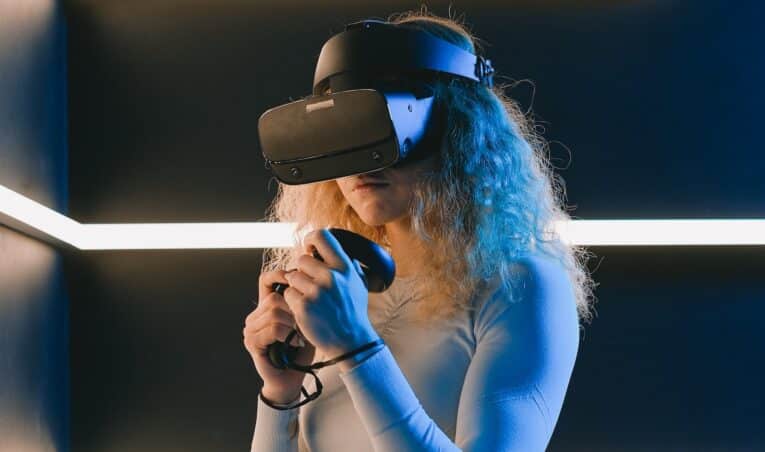
The gaming landscape is continually evolving, with Virtual Reality (VR) proving to be one of the most exciting developments in recent years. VR has fundamentally changed the way we perceive and interact with digital content, offering an immersive gaming experience that transcends traditional boundaries. An interesting facet of this phenomenon is the rise of VR arcades, which have opened new doors for gamers and non-gamers alike to experience the wonders of VR. This article aims to delve deeper into the pivotal role of VR arcades in broadening the access to gaming, and how they contribute to the democratization of VR technology.
The Emergence of VR Arcades
The idea of VR arcades is not an entirely fresh one. Going back to the late 20th century, the arcade era represented a golden age of gaming, where arcades served as communal hubs for gamers to gather and engage with cutting-edge games, often unavailable or unaffordable for home use. Fast forward to the 21st century, and we’re seeing the revival of these gaming meccas, but with a modern twist — they are now equipped with high-end VR technology that offers an unparalleled immersive experience.
The advent of VR arcades has been a direct response to the cost-prohibitive nature of sophisticated VR systems. Investing in a top-notch VR setup, inclusive of a headset, controllers, and a computer with substantial processing power to handle VR software, could burn a considerable hole in one’s pocket. This financial hurdle makes it challenging for many eager gamers to dive into VR gaming within their homes. VR arcades present an affordable and accessible alternative, enabling more gamers to enjoy the thrills of VR gaming without bearing the brunt of upfront costs.
Bridging the Accessibility Gap
Undoubtedly, one of the most significant contributions of VR arcades is the role they play in bridging the accessibility gap within the gaming industry. Until recently, the gaming realm was primarily confined to consoles, PCs, and later, smartphones. However, the prospect of VR gaming was largely unreachable for the majority due to the steep prices of VR equipment and the requirement for expansive environments conducive to a full-fledged VR experience.
By offering VR gaming on a pay-per-use model, VR arcades have expertly mitigated this financial barrier. These spaces boast a wide array of VR systems, from entry-level gear to top-tier setups, effectively rendering VR technology accessible to a broader demographic. This spectrum of options serves a diverse range of preferences and budgets, opening up the universe of VR to a larger crowd than ever before.
Offering Social Experiences
VR gaming, especially when confined to the home, has often been perceived as an isolating experience. Unlike traditional gaming mediums that promote communal participation via local multiplayer games, VR usually engulfs players within their headsets, relegating it to a predominantly single-player experience.
VR arcades are actively altering this narrative by reintroducing the social element to the world of gaming. These spaces offer multiplayer gaming experiences where players can physically interact within a shared space or collaborate within the same virtual game. The shared gaming experiences that VR arcades foster not only enhance social interaction but also make VR gaming a more inclusive and communal affair.
Promoting Innovation and Advancement
Beyond enhancing accessibility and fostering social engagement, VR arcades play a central role in stimulating innovation and advancement within VR technology. As these spaces cater to a diverse and demanding customer base, they need to constantly stay abreast with the latest games, software updates, and hardware advancements to maintain a competitive edge. This need naturally fuels innovation and development within the VR industry, fostering a thriving ecosystem for progress.
Moreover, VR arcades act as practical testing grounds for emerging VR games and technologies. Developers and manufacturers often leverage these spaces to trial their prototypes and gain invaluable user feedback. This real-time feedback loop plays a significant role in refining game design and hardware specifications, thereby contributing to the overall quality of VR experiences for all users.
The Future of VR Arcades
The prospective growth trajectory of VR arcades is incredibly promising. As VR technology continues to mature and evolve, VR arcades will likely provide even more realistic and awe-inspiring experiences. It is plausible to anticipate the emergence of specialized VR arcades that focus on specific genres or experiences, such as VR-powered escape rooms or fitness centers.
There’s potential for VR arcades to make their mark in the education and professional training sectors as well, providing immersive, interactive experiences that revolutionize traditional learning and skills development methods. Imagine the prospect of learning about historical events through a VR time travel journey, or acquiring new skills in a simulated VR workspace.
The democratizing power of VR arcades is immense. They are instrumental in expanding access to gaming, pushing the boundaries of VR technology, and driving innovation in the gaming industry. Their unique offerings and commitment to making VR more accessible signal a bright and inclusive future for gaming. As VR technology becomes increasingly integrated into our daily lives, the role of VR arcades will become ever more critical in shaping our gaming experiences and broadening the reach of VR.

